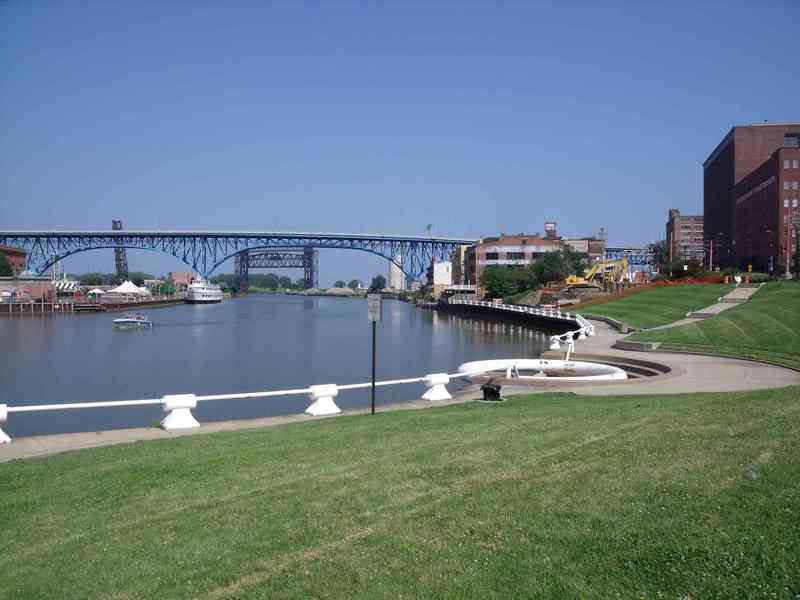
As you approach the southern side of Public Square you will see a bronze statue of a man. This famous figure stands frozen in time, keeping watch over the very town that bears his name.
Moses Cleaveland (1754-1806) was born and raised in Connecticut. After studying law at Yale College, he served as a Captain in the Continental Army during the Revolutionary War. Moses was a shareholder in the Connecticut Land Company which purchased land in the Western Reserve, or New Connecticut. This involvement led Moses Cleaveland on an expedition into the Ohio wilderness. He was responsible for surveying the land as well as negotiating land rights with the Native Americans living there, who initially challenged the surveying party's right to be on the land but ultimately accepted livestock, whiskey, and various trinkets from Cleaveland in exchange for an assurance of safety.
On July 22, 1796, Moses Cleaveland arrived at the mouth of the Cuyahoga River and decided that the land just to the east of it would be the capital of the new territory. His surveyors laid out a town, including a 9-1/2-acre Public Square, on the high bluffs overlooking Lake Erie and the winding Cuyahoga. Cleaveland and most of his men returned to Connecticut in October, having laid out towns and plots all across the territory east of the Cuyahoga River.
Ninety-two years later, in 1888, the Early Settlers Association of the Western Reserve erected a statue of Cleaveland on the very Public Square that his men had once plotted. Cast in bronze and standing just under eight feet tall, the statue, which cost over $4,000 to build, shows Cleaveland as a surveyor, holding a staff and compass. Despite the honored position that Cleaveland holds in the city's history, however, it is spelled Cleveland – without the extra "a." One legend has it that in 1830 the city's newspaper could not fit the "a" in its headline, so the city became Cleveland.
Cleveland further paid homage to its founder not only through the city’s name and bronze monument but through living monuments scattered throughout Greater Cleveland. In 1946, as part of the 150-year anniversary of Moses Cleaveland’s party arriving at the Cuyahoga River’s mouth, it was proposed that Arthur B. Williams and the Cleveland Museum of Natural History should locate and label trees that were alive in Cleveland when Moses Cleaveland first came to the city. There were 242 trees nominated from 23 different tree species. Each tree was checked to verify its age. The final list of official Moses Cleaveland Trees included 150 trees that the public could easily access. Each of the official Moses Cleaveland Trees was outfitted with commemorative metal plaques so that the public could easily identify the trees. Since 1946, more trees have been added to the official list of Moses Cleaveland Trees, while some of the first designated trees have died out. As of 2021, there are 273 Moses Cleaveland Trees, which stand as living history that connects present-day Cleveland to its founding.
Despite Moses Cleaveland’s vast impact on Cleveland, he never returned to the city that bears his name (minus an "a," anyway) after his surveying job was completed. On his return to New England he wrote:
"While I was in New Connecticut I laid out a town on the bank of Lake Erie, which was called by my name, and I believe the child is now born that may live to see that place as large as Old Windham."
Although it took time for Cleveland to grow and develop into a viable city after his departure in 1796, Cleaveland's prophecy proved quite an understatement.
Audio
Images





